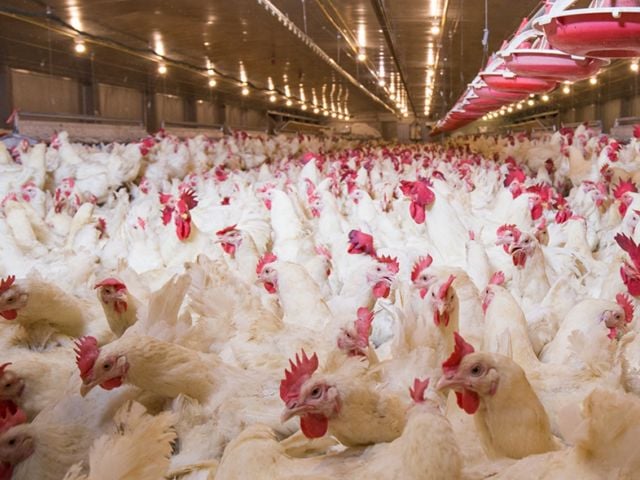MINNEAPOLIS – Manure from Minnesota’s 23,000 animal feedlots threatens to overload nearby cropland with chemicals that can pollute lakes, streams and aquifers, including drinking water sources, a new Environmental Working Group investigation found.
Using innovative geospatial techniques, EWG mapped where the 49 million tons of manure produced each year by the state’s cattle, hogs, turkeys and chickens are likely applied to cropland as fertilizer – which is frequently on the same acreage where commercial fertilizer is also used.
“For the first time, we can clearly see the extent to which farmers are overloading land in Minnesota’s farm country with animal manure and fertilizer – and where the problem is the worst,” said Sarah Porter, senior GIS analyst with EWG and co-author of the report. “This new tool illuminates why water quality across the state is declining at an alarming rate.”
When nitrogen and phosphorus, found in both manure and fertilizer, are applied in excess of what plants can take in, the chemicals can run off cropland, polluting surface waters and groundwater aquifers. Most Minnesotans get their tap water from groundwater supplies.
The Minnesota Pollution Control Agency, or MPCA, estimates that 56 percent of all of the state’s surface bodies of water do not meet basic water quality standards, and that so-called non-point source pollution, like runoff from cropland and animal operations, is responsible for about 85 percent of water pollution.
But water pollution does not stop above ground: Many of Minnesota’s animal operations are located in the central and southeast parts of the state, which also have the worst nitrate contamination of groundwater.
Although medium-sized and large feedlots account for less than one-fourth of the total animal feeding operations in Minnesota, they produce almost three-fourths of the state’s manure. (The number of animals that defines a medium or large operation varies by type of animal.) Manure can be an effective fertilizer for crops but is expensive to transport, so it is usually applied to fields close to the feedlot where it is generated – leading to a glut in areas with higher concentrations of medium and large feedlots.
“Our simulation shows that, even if manure is the only fertilizer used, some areas are fully saturated. This leaves little room to adapt to natural variations in weather, crop needs or the chemical content of different types of manure,” Porter said. “But we are still seeing high levels of commercial fertilizer sales in these same areas, so many acres may be getting as much as a double dose of nitrates and phosphorus, which simply can’t be absorbed.”
Minnesota now has three times as many large feedlots as in 1991, primarily due to new swine facilities. About three-quarters of all the state’s large feedlots house swine.
EWG’s new investigation found that in 69 of Minnesota’s 72 agricultural counties, nitrogen from manure combined with nitrogen in fertilizer exceeded the recommendations of the MPCA and the University of Minnesota.
Perhaps unsurprisingly, Minnesota’s tap water supplies are showing the effects of these overapplications of nitrogen.
In January, EWG released a study revealing that an estimated 500,000 Minnesotans drink tap water contaminated with elevated levels of nitrate, a breakdown product of nitrogen. Nitrate in drinking water is associated with an increased risk of colorectal cancer, birth defects and other serious health problems.
In February, another EWG report showed that the problem has worsened in more than 60 percent of the Minnesota tap water systems with the highest levels of nitrate contamination – many of them in the same areas that have high concentrations of feedlots.
EWG’s new simulation also found that on 57 percent of the fields likely to receive manure, phosphorus was applied in excess of crop needs. Phosphorus pollution is the primary driver of toxic algae outbreaks in lakes, rivers and other waterways, which can sicken both people and animals. EWG maintains a map illustrating that such outbreaks are increasingly common across the state.
The coronavirus pandemic has raised serious questions about the reliability and safety of the industrial model of meat production. Working conditions inside meatpacking plants spread the virus among workers and surrounding communities. Livestock producers are pushed to the brink as prices collapse, and consumers fear meat shortages.
EWG’s new analysis reveals yet another troubling vulnerability: The relentless growth and concentration of livestock operations is overwhelming the capacity of the land to handle the 49 million tons of manure that goes on surrounding fields every year, threatening drinking water, Minnesota’s iconic lakes and streams and the quality of life of residents.
###
The Environmental Working Group is a nonprofit, non-partisan organization that empowers people to live healthier lives in a healthier environment. Through research, advocacy and unique education tools, EWG drives consumer choice and civic action.


